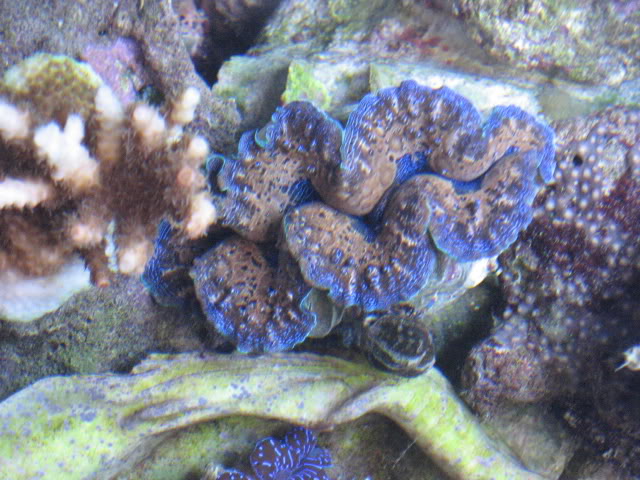Genus = Tridacna
Species = Crocea
Common name= Crocea clam
Species = Crocea
Common name= Crocea clam

Size and growth rate
T. Crocea is the smallest of the giant clams. This species can grow to a maximum size of about 6". These clams have been reported to grow as little as 1cm and as much as 2cm per year.
Location and geographic range
Crocea clams are often found in shallow clear water usually less than 7 meters, and even as deep as 15 meters. Crocea's can be found sitting high and dry at low tides. Also known as the rock boring clam they are mainly found buried in rock or coral heads. In doing this the wild Crocea usually breaks off all of the scutes from it's shell. They range from the West coast of the Malaysian Peninsula and Australia east to the Marianas, Solomon Islands, Viet Nam, and Fiji.
Attachment to substrate
T. Crocea uses their a byssal organ that secretes the sticky threads that will attach it to the substrate. This helps keep the clam from being swept away.
Lighting and flow requirements
Crocea's are the most light demanding of all the giant clams. I recommend metal halide or T5 with individual reflectors. Giant clams are found on reefs that usually have SPS corals, flow should be moderate to high. Just be sure that the mantle isn't being held over un naturally because of too much flow.
Coloration
The Crocea clams can be found in just about every color and combination under the sun.
Reef compatibility
Giant clams are found among the reefs of the world and are compatible with most reef safe animals. Although there are some reef safe fish that are not clam safe. These include: Angelfish, some Wrasses, Blennie's, Eels, and some shrimp.
Conclusion and comments.
Crocea's are common to the aquarium industry. They are being farmed by many clam farms throughout the world and are easily obtained. Some clam farms and importers are trying to sell the less popular colored Crocea's as a hybrid called Maxea's. There is no such documented thing as a hybrid clam so don't be fooled.
It is my personal opinion that if you intend to keep a Tridacna Crocea you should have an aquarium of 10 gallons or larger with very good lighting. They can be kept in smaller tanks but they rapidly outgrow them.
Last edited:



















